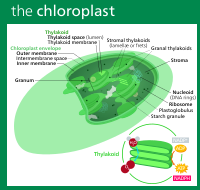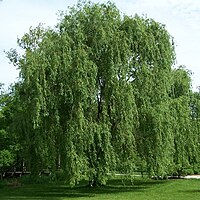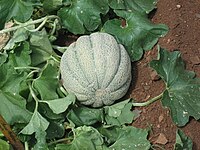
Phylogenetic significance of the characteristics of simple sequence repeats at the genus level based on the complete chloroplast genome sequences of Cyatheaceae
Sign Up to like & getrecommendations! Published in 2021 at "Ecology and Evolution"
DOI: 10.1002/ece3.8151
Abstract: Abstract The simple sequence repeats (SSRs) of plant chloroplasts show considerable genetic variation and have been widely used in species identification and phylogenetic relationship determination. Whether chloroplast genome SSRs can be used to classify Cyatheaceae… read more here.
Keywords: chloroplast; simple sequence; chloroplast genome; genus level ... See more keywords

A pipeline for effectively developing highly polymorphic simple sequence repeats markers based on multi‐sample genomic data
Sign Up to like & getrecommendations! Published in 2022 at "Ecology and Evolution"
DOI: 10.1002/ece3.8705
Abstract: Abstract Simple sequence repeats (SSRs) are widely used genetic markers in ecology, evolution, and conservation even in the genomics era, while a general limitation to their application is the difficulty of developing polymorphic SSR markers.… read more here.
Keywords: simple sequence; highly polymorphic; sequence repeats; genomic data ... See more keywords

Development of simple sequence repeat (SSR) markers in Medicago ruthenica and their application for evaluating outcrossing fertility under open-pollination conditions
Sign Up to like & getrecommendations! Published in 2018 at "Molecular Breeding"
DOI: 10.1007/s11032-018-0905-z
Abstract: Medicago ruthenica is a perennial leguminous plant with great economic value for forage production and soil conservation in northern China. Simple sequence repeat (SSR) markers are a major molecular tool for genetic and genomic research… read more here.
Keywords: medicago ruthenica; repeat ssr; simple sequence; sequence repeat ... See more keywords

Multiallelic and multilocus simple sequence repeats (SSRs) to assess the genetic diversity of a Salix spp. germplasm collection
Sign Up to like & getrecommendations! Published in 2019 at "Journal of Forestry Research"
DOI: 10.1007/s11676-019-00913-0
Abstract: Salix L. (willow) is the largest genus of the family Salicaceae and plays an important role in riparian habitats, wetlands and in shrub tundra. Due to the different implications for the species belonging to this… read more here.
Keywords: salix; salix spp; genetic diversity; simple sequence ... See more keywords

High-resolution melting analysis for identification of apple cultivars using simple sequence repeat markers
Sign Up to like & getrecommendations! Published in 2019 at "Plant Biotechnology Reports"
DOI: 10.1007/s11816-019-00539-y
Abstract: Apple trees are perennial plant and have a characteristic of requiring long period from seed germination to flowering and fruiting. Most Korean apple cultivars are derived from closely related varieties genetically; consequently, they are distributed… read more here.
Keywords: high resolution; resolution melting; analysis; simple sequence ... See more keywords

Implications of genome simple sequence repeats signature in 98 Polyomaviridae species
Sign Up to like & getrecommendations! Published in 2021 at "3 Biotech"
DOI: 10.1007/s13205-020-02583-w
Abstract: The analysis of simple sequence repeats (SSRs) in 98 genomes across four genera of the family Polyomaviridae was performed. The genome size ranged from 3962 (BM87) to 7369 bp (BM85) but maximum genomes were in the… read more here.
Keywords: implications genome; simple sequence; repeats signature; genome simple ... See more keywords

Identification and characterization of simple sequence repeats (SSRs) for population studies of Puccinia novopanici.
Sign Up to like & getrecommendations! Published in 2017 at "Journal of microbiological methods"
DOI: 10.1016/j.mimet.2017.04.011
Abstract: Switchgrass (Panicum virgatum L.) can be severely affected by rust disease. Recently switchgrass rust caused by P. emaculata (now confirmed to be Puccinia novopanici) has received most of the attention by the research community because… read more here.
Keywords: characterization; genetics; simple sequence; puccinia novopanici ... See more keywords

Genetic diversity and differentiation in citron watermelon [Citrullus lanatus var. citroides] landraces assessed by simple sequence repeat markers
Sign Up to like & getrecommendations! Published in 2017 at "Scientia Horticulturae"
DOI: 10.1016/j.scienta.2016.11.015
Abstract: Abstract Citron watermelon genetic resources are useful for dessert watermelon breeding. The objective of the present study was to assess the genetic diversity present among citron watermelon landrace collections of South Africa using simple sequence… read more here.
Keywords: watermelon; genetic diversity; citron watermelon; simple sequence ... See more keywords

Characterization of porcine simple sequence repeat variation on a population scale with genome resequencing data
Sign Up to like & getrecommendations! Published in 2017 at "Scientific Reports"
DOI: 10.1038/s41598-017-02600-8
Abstract: Simple sequence repeats (SSRs) are used as polymorphic molecular markers in many species. They contribute very important functional variations in a range of complex traits; however, little is known about the variation of most SSRs… read more here.
Keywords: variation; ssrs; simple sequence; genome resequencing ... See more keywords

De novo transcriptome assembly of Zanthoxylum bungeanum using Illumina sequencing for evolutionary analysis and simple sequence repeat marker development
Sign Up to like & getrecommendations! Published in 2017 at "Scientific Reports"
DOI: 10.1038/s41598-017-15911-7
Abstract: Zanthoxylum, an ancient economic crop in Asia, has a satisfying aromatic taste and immense medicinal values. A lack of genomic information and genetic markers has limited the evolutionary analysis and genetic improvement of Zanthoxylum species… read more here.
Keywords: sequence repeat; analysis; zanthoxylum; simple sequence ... See more keywords

Association Analysis and Validation of Simple Sequence Repeat Markers for Fiber Fineness in Ramie (Boehmeria Nivea L. Gaudich)
Sign Up to like & getrecommendations! Published in 2020 at "Journal of Natural Fibers"
DOI: 10.1080/15440478.2020.1848714
Abstract: This study investigated simple sequence repeat (SSR) marker associated with fiber fineness in ramie (Boehmeria nivea L. Gaudich). Firstly, association analysis was carried out using 107 ramie acces... read more here.
Keywords: fineness ramie; fiber fineness; simple sequence; sequence repeat ... See more keywords